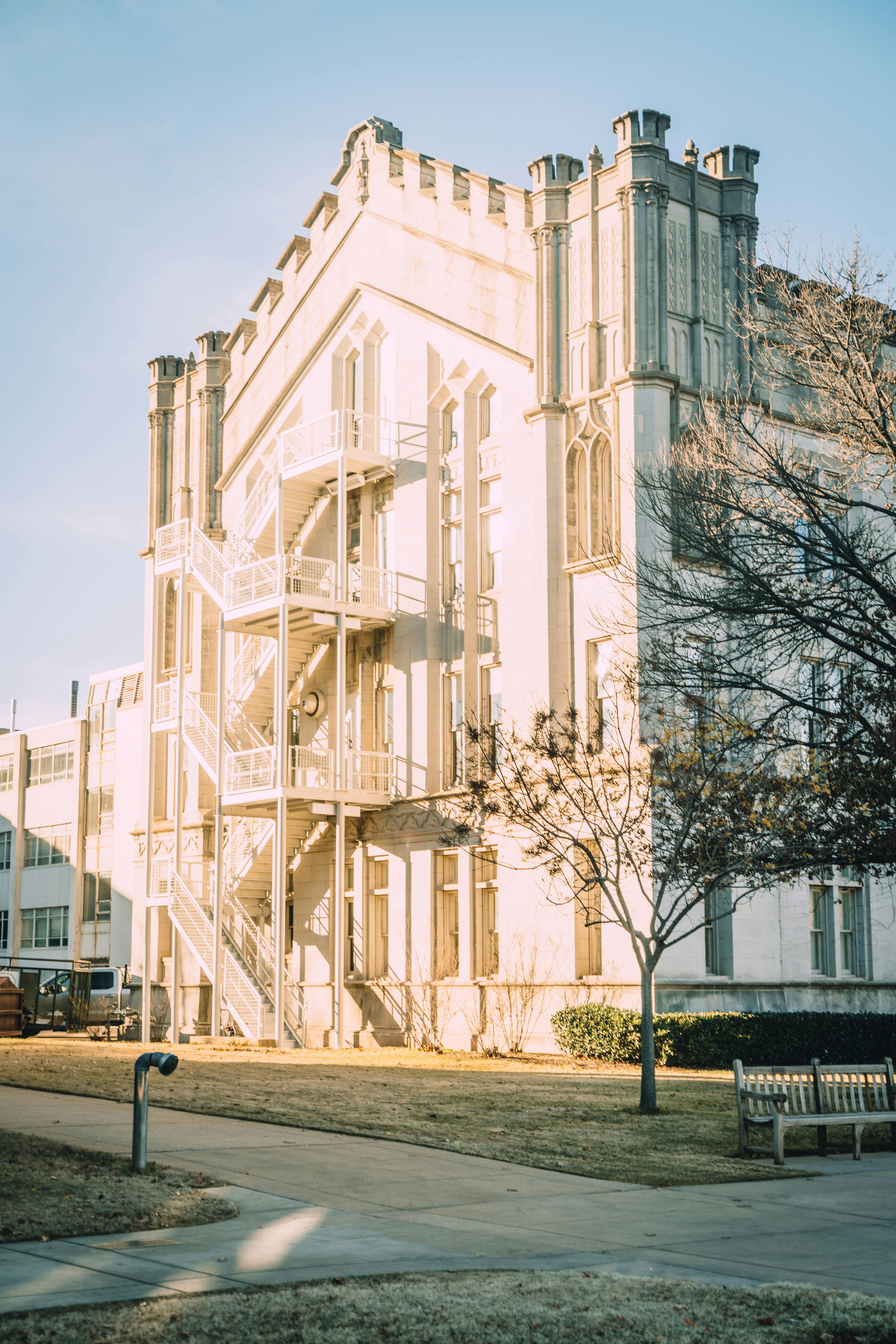Creating a beautiful and functional urban garden may sound like a daunting task, but with a few simple tips, you’ll be well on your way to designing a space that is both aesthetically pleasing and practical. From considering sunlight and shade to optimizing space and choosing the right plants, this article provides valuable guidance for planning the layout of your urban garden. Whether you’re a seasoned gardener or just starting out, these tips will help you create a thriving oasis in the heart of the city. So grab your gardening gloves and let’s get started!

Assessing Your Space
Determining the available area
Before starting your urban garden, it’s important to determine the available space you have to work with. Take note of the dimensions and shape of your outdoor area, whether it’s a small patio, balcony, or rooftop. Understanding the size of your space will help you to make informed decisions when it comes to choosing suitable containers and plants.
Analyzing sunlight exposure
Sunlight exposure is crucial for the success of your garden. Spend some time observing how the sun moves throughout the day in your outdoor space. Take note of shaded areas and areas that receive direct sunlight. Different plants have different sunlight requirements, so understanding the sunlight exposure in your space will help you choose the right plants for each area.
Evaluating soil quality
Assessing the quality of your soil is essential for the health and productivity of your plants. Consider getting a soil test done to determine the pH level and nutrient composition of your soil. This will help you determine if any amendments, such as organic matter or fertilizers, are needed to optimize the soil conditions for your plants.
Considering nearby structures and obstacles
Take into account any nearby structures or obstacles that may impact your garden. Are there buildings or tall trees that cast shadows on your garden space? Is there a nearby wall or fence that can be utilized for vertical gardening? Identifying these factors will help you make the most of your space and overcome any potential challenges that may arise.
Defining Your Garden Goals
Identifying your gardening objectives
To plan the layout of your urban garden effectively, it is important to identify your gardening objectives. Are you looking to grow your own vegetables, herbs, or flowers? Do you want to create a peaceful oasis or a vibrant and colorful space? Defining your goals early on will guide your decision-making process as you move forward.
Determining the desired aesthetics
Consider the desired aesthetics of your garden. Do you prefer a formal and structured layout, or a more natural and wild look? Think about the colors, textures, and overall style that you envision for your garden. Having a clear vision of the aesthetics will help you choose the right plants and design elements to achieve the desired look.
Deciding on the types of plants and vegetables
Decide on the types of plants and vegetables you want to include in your urban garden. Consider your gardening objectives, sunlight exposure, and soil conditions when choosing plants that will thrive in your space. Whether you want to grow fresh herbs for cooking or create a floral paradise, selecting the right plants is essential for a successful garden.
Considering future expansion or changes
As you plan your garden layout, it’s important to consider future expansion or changes. Will you want to add more containers or expand your garden in the coming years? Leave some flexibility in your design to accommodate future adjustments or additions. Being mindful of future plans will save you time and effort in the long run.

Choosing the Right Containers
Selecting appropriate container materials
When choosing containers for your urban garden, consider the appropriate materials for your space. Common options include clay pots, plastic containers, wooden planters, or even repurposed items. Each material has its benefits and drawbacks in terms of durability, aesthetics, and insulation properties. Choose containers that suit your style and the needs of your plants.
Considering sizes and depths
Container sizes and depths are important factors to consider when planning your garden layout. Different plants have different root systems and space requirements. Ensure that your containers are deep enough to accommodate the roots and provide adequate drainage. Carefully consider the mature size of each plant to determine the appropriate container size to promote healthy growth.
Evaluating drainage options
Proper drainage is crucial for the health of your plants. Choose containers with drainage holes or consider adding your own if needed. This will prevent waterlogged soil, which can lead to root rot and other issues. Additionally, consider placing saucers or trays underneath your containers to collect excess water and prevent damage to your outdoor space.
Opting for portable or permanent containers
Decide whether you prefer portable or permanent containers for your urban garden. Portable containers offer the flexibility to move plants around to optimize sunlight exposure or change the layout whenever desired. Permanent containers, such as built-in planter boxes or elevated beds, provide a more stable and long-lasting option. Consider your needs and preferences to determine the best choice for your garden.
Planning Vertical Gardening
Exploring trellises, walls, and fences
Vertical gardening is a smart solution for maximizing space in urban gardens. Explore the use of trellises, walls, and fences to create vertical growing areas. These structures provide support for climbing plants and can add visual interest to your garden. Consider installing trellises or attaching containers to walls and fences to maximize your growing area.
Selecting climbing plants and vines
When planning a vertical garden, choosing the right plants is essential. Select climbing plants and vines that are well-suited for your space and climate. Consider the mature size of the plants, their growth habits, and their compatibility with the structure you’ll be using for support. Climbing roses, ivy, and clematis are popular choices for vertical gardening.
Ensuring proper structural support
Ensure that the structures you choose for vertical gardening have proper support. Trellises, walls, and fences should be sturdy and able to withstand the weight of the plants they will support. If needed, reinforce the existing structures or consider installing additional support systems such as wires or cables to provide stability for climbing plants.
Utilizing hanging baskets and vertical planters
Hanging baskets and vertical planters are great options for adding greenery to small spaces. They can be attached to walls, fences, or hung from ceilings or hooks. Utilizing hanging baskets and vertical planters adds a new dimension to your garden and allows you to grow a variety of plants, even in limited space. Consider trailing plants or compact herbs for these types of containers.

Selecting Suitable Plants
Researching local climate and hardiness zones
When selecting plants for your urban garden, it’s important to research your local climate and hardiness zones. Different plants have specific temperature and climate requirements to thrive. Determine your hardiness zone and choose plants that are suitable for your climate. This will help ensure the success of your garden and increase your chances of growing healthy and productive plants.
Choosing plants based on available sunlight
Consider the available sunlight in your garden when selecting plants. Some plants thrive in full sun, while others prefer partial shade or even full shade. Observe the sunlight exposure in different areas of your garden throughout the day and choose plants that are well-suited to the light conditions in each location. This will help you optimize the growth and health of your plants.
Considering plant compatibility
When planning your garden, consider the compatibility of different plants. Some plants have competing root systems or growth habits that may not work well together. On the other hand, certain plants have beneficial relationships, such as companion plants that deter pests or improve soil conditions. Research plant compatibility and consider companion planting strategies to maximize the health and productivity of your garden.
Opting for dwarf or compact varieties
In a small urban garden, space is often limited. Opting for dwarf or compact varieties of plants can help you maximize your growing area without sacrificing variety or productivity. Look for plants labeled as “dwarf,” “compact,” or suitable for container gardening. These varieties are specifically bred to be smaller and more suited for smaller spaces, making them perfect for urban gardens.
Designing Pathways and Access Points
Planning convenient walkways and paths
Designing convenient walkways and paths in your urban garden is essential for easy access and maintenance. Determine the areas where you will need to walk or perform garden tasks, such as watering or harvesting. Create clear and well-defined pathways to ensure you can move through your garden with ease. Consider using materials like gravel, stepping stones, or pavers to create durable and visually appealing walkways.
Including access points for maintenance
When designing your garden layout, it’s important to include access points for maintenance. Consider including wider paths or openings that allow you to easily maneuver larger tools or equipment. These access points will make tasks such as weeding, pruning, and fertilizing more manageable, ensuring that your garden stays healthy and well-maintained.
Considering wheelchair accessibility
If wheelchair accessibility is a consideration for your urban garden, be mindful of creating pathways and access points that are wide enough for easy navigation. Use materials that provide a smooth surface for wheelchair users, such as concrete or pavers. It’s important to design a garden that is welcoming and accessible to everyone.
Balancing aesthetics with functionality
While designing pathways and access points, it’s crucial to find a balance between aesthetics and functionality. Consider how the pathways will integrate with the overall design of your garden. Use materials and shapes that complement the style and desired aesthetics of your space. Creating visually appealing pathways will enhance the overall look of your garden while still serving their intended purpose.
Arranging Planting Beds
Deciding on the size and location of beds
When arranging planting beds in your urban garden, consider the size and location carefully. Determine the amount of space you have available and the number of beds you want to incorporate. Measure out the dimensions of each bed to ensure they fit well within your garden layout. Additionally, consider the location of the beds to optimize sunlight exposure and create a visually pleasing design.
Considering raised beds or traditional planting
Decide whether you want to opt for raised beds or traditional planting in your urban garden. Raised beds offer several benefits, including better soil drainage, easier access for maintenance, and the ability to start gardening without worrying about poor soil quality. However, traditional planting directly in the ground may be a suitable option if your soil quality is already good and you prefer a more organic approach.
Designing different levels or terraces
Creating different levels or terraces in your planting beds adds visual interest to your urban garden. Consider using retaining walls, stones, or planks to separate different levels within a bed. This not only adds dimension to your garden but also allows you to grow a variety of plants with different sunlight or soil requirements in one space.
Implementing companion planting strategies
Take advantage of companion planting strategies when arranging your planting beds. Companion planting involves growing different plant species together to benefit each other. For example, certain plants repel pests or attract beneficial insects that can help protect neighboring plants. Research companion planting combinations and incorporate them into your planting beds to create a thriving and resilient garden.
Growing in Small Spaces
Utilizing vertical space effectively
Growing in small spaces requires maximizing every inch of available space. Utilize vertical space effectively by attaching planters to walls, hanging baskets from railings, or using trellises and fences for climbing plants. By thinking vertically, you can significantly increase your growing area without needing more floor space.
Exploring the concept of square foot gardening
Square foot gardening is an excellent technique for growing in small spaces. It involves dividing your garden into square-foot sections and planting a specific number of plants in each section, depending on their spacing requirements. This method is efficient, low-maintenance, and enables you to grow a variety of plants in a limited area.
Using compact or stacked containers
Compact or stacked containers are perfect for growing in small spaces. These containers are designed to save space by stacking vertically or fitting snugly together. They are available in various sizes and shapes, allowing you to grow a wide range of plants while utilizing minimal space.
Implementing hanging or trailing plants
Hanging or trailing plants are great additions to small urban gardens. They add interest and greenery by using vertical space and cascading down from containers or hanging baskets. Consider plants like trailing ivy, petunias, or geraniums to create a lush and vibrant garden even in the smallest of spaces.
Accounting for Watering and Irrigation
Determining water source and availability
When planning your garden layout, consider the source and availability of water. Determine if you have access to an outdoor faucet, rainwater collection system, or if you’ll need to rely on watering cans or a hose. Understanding your water source will help you determine the most efficient and convenient watering methods for your urban garden.
Considering manual watering versus automatic systems
Decide whether you will water your plants manually or install automatic irrigation systems. Manual watering can be time-consuming, but it allows for greater control and flexibility. Automatic systems, such as drip irrigation or sprinklers, save time and ensure consistent watering but may require additional setup and maintenance. Consider your lifestyle and the needs of your plants when choosing a watering method.
Installing drip irrigation or soaker hoses
Drip irrigation or soaker hoses are excellent options for efficiently watering your urban garden. These systems deliver water directly to the plant roots, minimizing waste and evaporation. They also help prevent diseases caused by overhead watering. Consider installing a drip irrigation system or using soaker hoses to ensure efficient and targeted watering for your plants.
Managing water runoff and drainage
Proper management of water runoff and drainage is crucial in urban gardens. Ensure that your garden layout includes measures to prevent water runoff, such as creating sloped planting beds or adding channels to direct excess water away from your outdoor space. Incorporating mulch or gravel in your planting beds can also help regulate soil moisture levels and improve drainage.
Incorporating Functional Elements
Adding seating areas or outdoor furniture
Incorporating seating areas or outdoor furniture in your urban garden creates a cozy and inviting atmosphere. Consider placing a bench, chairs, or rattan furniture where you can relax and enjoy your garden. Pay attention to the placement of these elements, ensuring they don’t obstruct walkways or impede plant growth.
Including composting or recycling systems
Composting and recycling systems are valuable additions to any urban garden. Composting your kitchen scraps and yard waste allows you to create nutrient-rich compost to enhance the health of your plants. Additionally, setting up a recycling system for plastic, glass, and other recyclables reduces waste and supports a sustainable lifestyle.
Integrating storage solutions for tools and supplies
Organizing your gardening tools and supplies is essential for maintaining a functional and tidy garden. Consider integrating storage solutions such as shelves, hooks, or outdoor cabinets to keep your tools accessible and protected from the elements. This will make gardening tasks more efficient and prevent clutter in your urban garden.
Considering the addition of garden art or décor
Add a personal touch to your urban garden by incorporating garden art or décor. Decorative elements such as sculptures, fountains, or wind chimes can enhance the aesthetics of your space and make it feel more inviting. Choose pieces that reflect your personal style and complement the overall theme of your garden.
Planning the layout of your urban garden may seem like a daunting task, but with careful consideration and these tips, you can create a beautiful and productive space. Assess your available area, define your garden goals, choose the right containers, plan for vertical gardening, select suitable plants, design pathways and planting beds, grow in small spaces, account for watering and irrigation, and incorporate functional elements. By following these steps, you’ll be well on your way to creating a thriving urban garden that brings you joy and satisfaction. Happy gardening!


